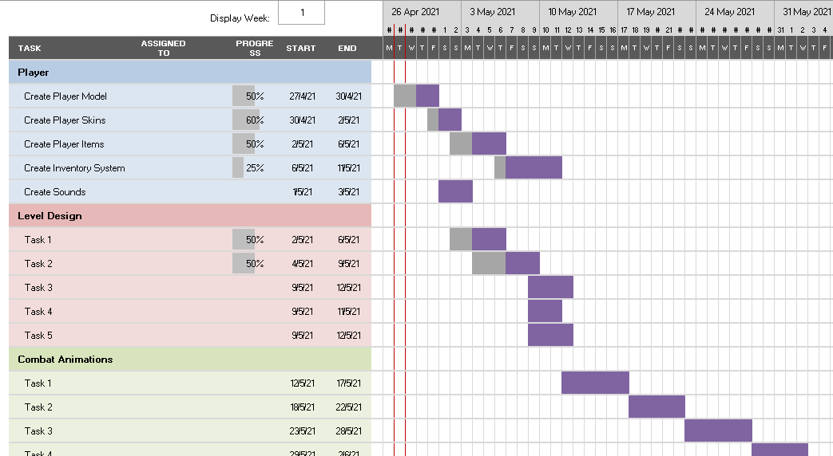An action plan is a checklist for the steps or tasks you need to complete in order to achieve the goals you have set.
It’s an essential part of the project planning process.
Action plans can be used outside of work and education by individuals to prepare a strategy to achieve their own personal goals as well.
An action plan is not something set in stone. As circumstances change, you will have to revisit and adjust to meet the latest needs.
An action plan should be created in the Design phase of your project. Action plans should have the following:
- A well-defined description of the goal to be achieved
- Tasks / steps that need to be carried out to reach the goal
- People who will be in charge of carrying out each task
- Deadlines and milestones (when is the task to be completed by)
- Resources needed to complete the tasks
- Measures to evaluate progress
Having everything listed down on one location makes it easier to track progress and plan the progress of the project.
Why should you have an action plan?
Planning helps you prepare for the obstacles ahead and keep you on track.
Some benefits of an action plan;
- An action plan highlights exactly what steps to be taken and when they should be completed, you will know exactly what you need to do next.
- Having you goals planned out in steps will give you a reason to stay motivated and committed throughout the project.
- You can track you progress toward your goal
Step 1: Define your end goal
If you are not clear about what you want to do and what you want to achieve, you are setting yourself up for failure.
Planning a new initiative? Start by defining where you are and where you want to be.
Solving a problem? Analyse the situation and explore possible solutions before prioritising them.
Then write down your goal. And before you move on to the next step, run your goal through the SMART criteria.
- Specific – Well-defined and clear
- Measurable – Include measurable indicators to track progress
- Attainable – Realistic and achievable within the resources, time, money, experience, etc that you have
- Relevant – Aligns with your other goals
- Timely – Has a finishing date
Step 2: List the steps to be followed
The goal is clear but how exactly do you to realise it?
Create a rough template to list down all the tasks to be performed and the dates the tasks are due.
Make sure that each task is clearly defined and is attainable.
If a task is large or complicated, then break them down to smaller ones.
Step 3: Prioritise tasks and add deadlines
Now that you have a list of the tasks needed to complete the project it’s time to reorganise the list.
You may need to prioritise some steps as they can be blocking other sub-steps. If a step relies on an output from another step, then you need to prioritise that steps as it is holding up work on the sub-steps.
Add deadlines, and make sure that they are realistic.
Step 4: Add milestones
Milestones can be considered mini goals leading up to the main goal at the end. The advantage of adding milestones is that they give something to look forward to and help stay motivated even though the final due date is far away.
Start from the end goal and work your way back as you set milestones. Remember not to keep too little or too much time in between the milestone you set.
Step 5: Identify resources required
Before you start your project, it’s crucial to ensure that you have all the necessary resources at hand to complete the tasks. And if they are not currently available, you first need to plan to acquire them.
Step 6: Visualise your action plan
The point of this step is to create something that everyone can understand at a glance and that can be shared with everyone.
Whether your action plan comes in the shape of a flowchart, Gantt chart, or table, make sure that it clearly communicates the elements we have identified so far – tasks, deadlines, resources, etc.


Step 7: Monitor, evaluate and update
Allocate some time to evaluate the progress you’ve made.
You can mark tasks that are completed as done on this final action plan, bringing attention to how you’ve progressed toward the goal.
This will also bring out the tasks that are pending or delayed, in which case you need to figure out why and find suitable solutions. And then update the action plan accordingly.
